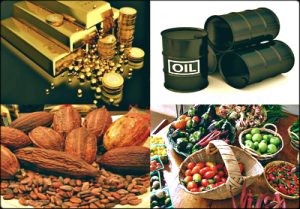New data released by the Ghana Statistical Service shows that prices of foodstuff went up during the three-week partial lock-down in April, which was implemented as a measure to curtail the spread of COVID-19.
The food component of the country’s inflation for April increased by 8 percent more than the non-food component, pushing the rate for April to 10.6 percent, from the 7.8 percent recorded in March 2020.
According to the Ghana Statistical Service, prices of vegetables and items like plantain and cassava went up particularly in the areas that experienced the partial lock-down.
Speaking at a press briefing, the Government Statistician, Prof. Samuel Annim, said he expects the lifting of the lockdown and other meeasures to ease the rate at which prices of foodstuffs went up.
He stated that data collection was conducted during the period of the partial lockdown in 44 markets and 7,722 outlets.
“Food is the predominant driver of the year-on-year inflation. Food contributed 59.6% of the year-on-year inflation in April 2020”, he said, adding that food is also the predominant driver of the month-on-month inflation.
Prof. Annim stated that there is the need to put in place the appropriate measures to sustain prices of basic items such as vegetable.
“I will add that we must also use moral suasion to appeal to our market operators not to unnecessarily increase prices just because of the time”
Regional inflation breakdown
At the regional level, Prof. Annim explained that the overall year-on-year inflation ranged between 2.3% in the Upper East Region and 15.1% in Greater Accra.
“When comparing food to non-food inflation, there are clear differences between regions. Greater Accra with 20.8%, and Ashanti recording 18.2% had the highest rates of food inflation, while Eastern Region saw the highest non-food inflation of 12.5%. Upper East, Northern, Eastern, and Central Region experienced higher non-food than food inflation, the opposite was true for the other six regions,” he said.
Source: Citibusinessnews.com







